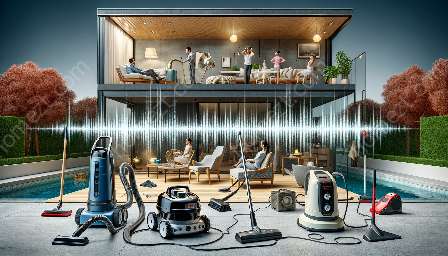Noise pollution from in-home workout equipment can be a significant issue for many households, affecting both the occupants and neighbors. This topic cluster aims to explore the causes of noise pollution in homes, understand how in-home workout equipment contributes to this issue, and provide insights into noise control and mitigation techniques for a quieter and more pleasant living environment.
Causes of Noise Pollution in Homes
Understanding the causes of noise pollution in homes is crucial to addressing the issue effectively. Several factors contribute to noise pollution within residential spaces, including:
- 1. Inadequate Sound Insulation: Poor insulation in walls, ceilings, and floors can allow sound to travel freely, leading to disturbances from various sources within and outside the home.
- 2. Mechanical Equipment: Appliances, HVAC systems, and in-home workout equipment can generate significant noise, especially when not properly maintained or designed with noise reduction features.
- 3. Neighbor Activities: Actions and activities of neighbors, such as loud music, home improvements, or outdoor gatherings, can contribute to noise pollution within the residential environment.
- 4. Traffic and Urban Noise: Homes located near busy streets, airports, or industrial areas are susceptible to higher levels of external noise pollution that can permeate indoor spaces.
Noise Pollution from In-Home Workout Equipment
In recent years, there has been a notable increase in the popularity of in-home workout equipment such as treadmills, stationary bikes, and elliptical machines. While these devices enable individuals to pursue their fitness goals conveniently, they also introduce potential sources of noise pollution within homes. The following factors contribute to noise pollution from in-home workout equipment:
- 1. Mechanical Vibrations: Many workout machines produce vibrations as part of their normal operation, which can be transmitted through floors and walls, causing disturbances for occupants in adjacent rooms or units.
- 2. High Impact Workouts: Activities like jumping, weightlifting, or high-intensity cardio exercises can produce impact noise that reverberates throughout the home, potentially disrupting other household members or neighbors.
- 3. Poor Equipment Maintenance: Improperly lubricated parts, loose components, or worn-out mechanisms in workout equipment can amplify operational noise, contributing to overall noise pollution in the home environment.
- 4. Location and Placement: The position of workout equipment within the home, especially in relation to shared walls, floors, and proximity to living areas, can significantly influence the spread of noise pollution.
Noise Control in Homes
Implementing effective noise control measures can help reduce the impact of in-home workout equipment and other sources of noise pollution. Key strategies for noise control in homes include:
- 1. Soundproofing: Installing sound-absorbing materials, such as acoustic panels, carpets, and curtains, can help minimize the transmission of noise within the home, improving overall acoustics and reducing disturbances.
- 2. Equipment Maintenance: Regular servicing and maintenance of in-home workout equipment, including lubrication, tightening of components, and addressing mechanical issues, can help mitigate excessive operational noise.
- 3. Isolation Techniques: Using isolation pads or rubber mats beneath workout machines, as well as disconnecting direct mechanical connections with walls and floors, can help contain vibrations and reduce noise transmission.
- 4. Behavioral Adjustments: Being mindful of workout timings, choosing low-impact exercises during sensitive hours, and considering the location of workout spaces within the home can contribute to minimizing noise disturbances for household members and neighbors.
- 5. Community Engagement: Open communication and collaboration with neighbors to address noise concerns and establish mutually agreeable guidelines for in-home activities can foster a harmonious living environment.
By understanding the causes of noise pollution in homes, acknowledging the impact of in-home workout equipment, and implementing effective noise control measures, individuals can create a more peaceful and considerate living environment for themselves and their communities.



























